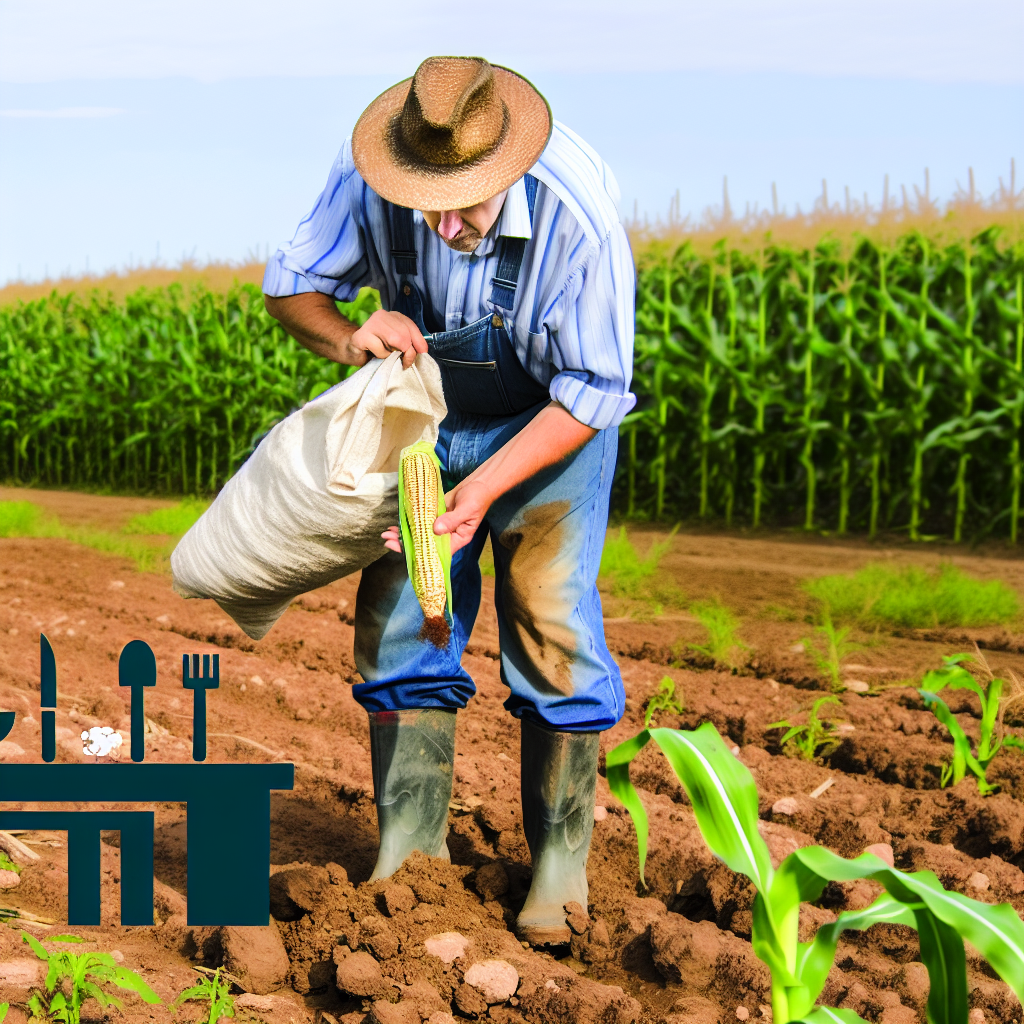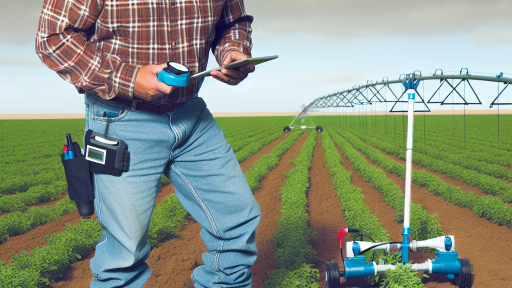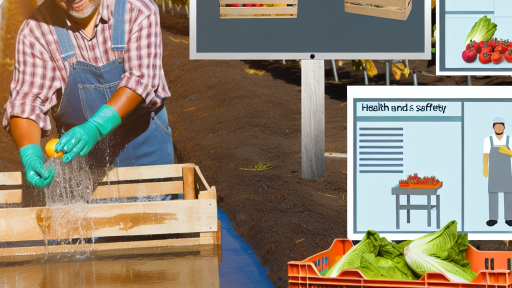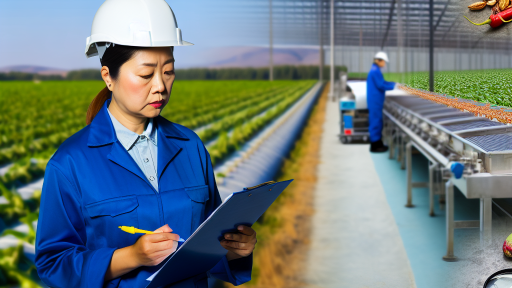Introduction to Farm-To-Table Policies and Their Objectives
Farm-to-table policies aim to connect local farmers directly with consumers.
These initiatives seek to promote the use of fresh, locally sourced food.
As a result, they support local economies and encourage sustainable practices.
Various stakeholders, including restaurants and farmers’ markets, play a role.
One primary objective is to reduce the distance food travels to consumers.
This reduction in transportation can lower carbon footprints significantly.
Furthermore, these policies enhance food security by supporting local agriculture.
Farm-to-table practices also lead to improved food quality and freshness.
Ultimately, they foster a sense of community among producers and consumers.
Benefits of Farm-To-Table Policies
Farm-to-table policies offer numerous advantages for communities.
They enhance the flavor and nutritional value of food products.
Moreover, these policies promote seasonal eating, which aligns with nature.
Locally sourced food often requires fewer preservatives and additives.
This approach also creates awareness about food origins among consumers.
Challenges in Implementing Farm-To-Table Policies
Despite their benefits, implementing farm-to-table policies faces challenges.
Transform Your Agribusiness
Unlock your farm's potential with expert advice tailored to your needs. Get actionable steps that drive real results.
Get StartedOne significant hurdle is ensuring consistent supply from local farms.
Additionally, not all regions have access to a variety of local products.
This limitation can hinder the diversity of offerings in restaurants.
Furthermore, pricing can be an issue for consumers and vendors alike.
Often, local food can be more expensive than mass-produced options.
Future Perspectives of Farm-To-Table Initiatives
Looking ahead, farm-to-table policies may evolve considerably.
Technological advancements could further streamline supply chains.
For example, online platforms connecting farmers directly with consumers may grow.
Additionally, educational programs can raise awareness about local sourcing.
As a result, community engagement may strengthen, fostering loyalty.
Overall, farm-to-table initiatives are likely to gain momentum.
Consequently, they will continue to shape the agricultural landscape.
Historical Context of Farm-To-Table Initiatives in Agriculture
The Origins of Farm-To-Table Movement
The farm-to-table movement traces its origins to the 1970s.
During this timeframe, consumers sought fresher food sources.
Health awareness played a pivotal role in this shift.
Additionally, environmental concerns were on the rise.
Consequently, many began to advocate for local sourcing.
Key Figures in the Farm-To-Table Movement
Renowned chef Alice Waters significantly influenced the movement.
She established Chez Panisse in Berkeley, California.
Waters prioritized seasonal and local ingredients.
Her philosophy inspired countless chefs across the nation.
Similarly, other culinary leaders joined the cause.
Legislative Support and Development
The 1990s saw increased governmental support for local agriculture.
Programs aimed to connect farmers directly with consumers.
Showcase Your Farming Business
Publish your professional farming services profile on our blog for a one-time fee of $200 and reach a dedicated audience of farmers and agribusiness owners.
Publish Your ProfileSuch initiatives helped promote healthy eating habits.
Subsequently, farm-to-table restaurants gained popularity.
Local food systems began to flourish during this era.
Impact on Agricultural Practices
The farm-to-table movement transformed agricultural practices.
Farmers adopted sustainable and organic techniques.
This transition aimed to meet consumer demand for quality.
As a result, crop diversity increased in many regions.
The Evolution in Recent Years
Today, the farm-to-table movement continues to evolve.
Innovations in technology support local food distribution.
Farmers’ markets now thrive in urban settings.
Moreover, schools and institutions emphasize local sourcing.
These changes reflect a growing commitment to sustainability.
Impact of Farm-To-Table Policies on Local Crop Production
Definition of Farm-To-Table Policies
Farm-to-table policies aim to connect consumers directly with local farmers.
These policies encourage the consumption of locally sourced food.
They often include programs that promote farmers’ markets.
Additionally, they support local restaurants that prioritize local ingredients.
Benefits of Farm-To-Table Policies
These policies enhance local economies by keeping money within communities.
They also promote sustainable agricultural practices among local farmers.
Furthermore, farm-to-table initiatives improve food freshness and quality.
Local produce often contains higher nutrient levels compared to imported goods.
Effects on Crop Diversity
Farm-to-table policies can increase crop diversity in local agriculture.
Farmers are encouraged to grow a variety of crops for local consumption.
This diversity helps to build resilience against pests and diseases.
Moreover, it supports the recovery of heritage and heirloom varieties.
Challenges for Local Farmers
Adopting these policies presents some challenges for farmers.
Farmers may struggle with market access and distribution logistics.
Additionally, they often face pressures to meet local demand consistently.
Some farmers may lack the resources to transition to sustainable practices.
Case Studies of Success
Several communities have seen positive impacts from these policies.
In Vermont, local farms reported increased sales after farm-to-table initiatives launched.
In California, restaurants sourcing locally have also thrived economically.
These examples demonstrate the potential benefits of supporting local agriculture.
Future Implications for Agriculture
Farm-to-table policies may reshape future agricultural practices.
Increased consumer awareness could drive demand for local produce.
This shift may lead to more sustainable farming practices nationwide.
Ultimately, these policies have the potential to foster healthier communities.
Uncover the Details: Impact Of Pesticide Regulations On Crop Production
Economic Effects of Farm-To-Table Policies on Farmers and Markets
Introduction to Farm-To-Table Policies
Farm-to-table policies aim to connect producers with consumers directly.
These initiatives promote local food systems and sustainable practices.
As a result, they have significant economic implications for farmers and markets.
Showcase Your Farming Business
Publish your professional farming services profile on our blog for a one-time fee of $200 and reach a dedicated audience of farmers and agribusiness owners.
Publish Your ProfileIncreased Demand for Local Produce
Farm-to-table initiatives often lead to increased demand for local produce.
This shift benefits local farmers as they gain access to new markets.
Consequently, farmers can increase their revenues and stabilize their incomes.
Impact on Pricing Strategies
Farmers can adopt new pricing strategies due to increased demand.
Higher prices for organic and locally sourced products become possible.
This shift allows farmers to cover higher production costs effectively.
Investment in Infrastructure
Farm-to-table policies encourage investment in local agricultural infrastructure.
Farmers often need better transportation systems to reach local markets.
Additional investments in processing facilities also contribute to economic growth.
Challenges for Small-Scale Farmers
Despite benefits, small-scale farmers may face significant challenges.
They often lack access to the resources needed to meet growing demand.
Access to capital remains a barrier for many small producers.
Strengthening Community Relationships
Farm-to-table policies foster stronger relationships within communities.
These connections lead to increased local spending and support.
Community-supported agriculture programs exemplify this trend.
Economic Implications of Farm-To-Table Policies
Farm-to-table policies affect farmers and markets positively.
They drive local economies and promote sustainable agricultural practices.
However, addressing challenges is essential for maximizing these benefits.
Uncover the Details: Navigating Environmental Regulations in Farming
Consumer Demand and Its Influence on Crop Production Decisions
The Role of Consumer Preferences
Consumer preferences significantly affect crop production decisions.
Farmers often respond to shifts in consumer demand.
For instance, a rise in demand for organic produce influences planting choices.
As consumers prioritize fresh and local foods, farmers adapt their strategies.
This shift enhances local economies and reinforces sustainable practices.
Market Trends and Crop Diversity
Market trends showcase a growing interest in diverse crops.
Farm-To-Table initiatives encourage farmers to grow unique varieties.
Consequently, this movement fosters agricultural biodiversity.
Diverse crops not only meet consumer demands but also improve resilience.
Farmers can mitigate risks associated with monoculture practices.
Impact of Pricing on Crop Production
Pricing plays a crucial role in crop production decisions.
When consumers are willing to pay a premium for local products, farmers benefit.
This willingness justifies the costs associated with sustainable practices.
As a result, farmers are encouraged to invest in high-quality goods.
Positive pricing signals lead to increased production of desired crops.
Challenges Faced by Farmers
Despite the positive impacts, farmers face several challenges.
They must navigate fluctuating market demands and pricing instability.
Additionally, competition from larger agribusinesses presents difficulties.
Farmers also deal with the pressures of climate change.
These challenges require innovation and adaptability in crop management.
Strategies for Addressing Consumer Demand
Farmers can adopt various strategies to align with consumer demand.
Showcase Your Farming Business
Publish your professional farming services profile on our blog for a one-time fee of $200 and reach a dedicated audience of farmers and agribusiness owners.
Publish Your ProfileBuilding direct relationships with consumers through farmers’ markets is effective.
Moreover, utilizing social media can enhance visibility and engagement.
Participating in community-supported agriculture fosters loyalty among consumers.
Such approaches can lead to improved market positioning and profitability.
Gain More Insights: How Food Safety Regulations Impact Agricultural Production

Environmental Sustainability and Farm-To-Table Practices
Importance of Sustainable Practices
Farm-to-table practices encourage sustainable farming methods.
These practices focus on local sourcing of food products.
This reduces the carbon footprint associated with long-distance transportation.
Moreover, they promote organic farming techniques.
This enhances soil health and water conservation.
Impact on Local Ecosystems
Farm-to-table policies support biodiversity in agriculture.
They create habitats for local wildlife.
This practice can lead to healthier ecosystems overall.
Furthermore, it reduces pesticide and fertilizer use.
As a result, water and air quality improve significantly.
Community and Economic Benefits
These practices strengthen local economies.
They support small family farms and local businesses.
Consequently, they encourage community engagement and awareness.
People become more connected to their food sources.
This fosters a culture of healthier eating habits.
Challenges and Considerations
Implementing farm-to-table policies can face obstacles.
For instance, small farmers may lack the resources to scale up.
Additionally, consumer habits can be difficult to change.
Moreover, consistent access to fresh produce is not always guaranteed.
However, through education and support, these challenges can be overcome.
Explore Further: Environmental Impact Assessments in Agriculture
Challenges Faced by Farmers in Implementing Farm-To-Table Policies
Market Accessibility
Farmers often struggle with market accessibility for their products.
Many local markets lack the infrastructure needed for farm-to-table sourcing.
Additionally, some regions feature limited demand for local produce.
Consequently, farmers may find it hard to establish buyer relationships.
Financial Constraints
Implementing farm-to-table policies can be financially taxing for farmers.
Initial investments in infrastructure and marketing can strain resources.
Moreover, organic farming practices generally require more capital.
Farmers often face challenges in securing loans or grants for projects.
Regulatory Hurdles
Navigating local and federal regulations can pose significant challenges.
Farmers frequently encounter complex food safety laws.
Compliance with organic certification processes can be overwhelming.
These regulations can deter farmers from pursuing farm-to-table initiatives.
Education and Training
Many farmers lack the necessary education on sustainable practices.
Training in new farming techniques can be hard to find.
Showcase Your Farming Business
Publish your professional farming services profile on our blog for a one-time fee of $200 and reach a dedicated audience of farmers and agribusiness owners.
Publish Your ProfileAdditionally, farms need staff who understand farm-to-table operations.
Without adequate education and training, transitioning can be difficult.
Consumer Awareness
Consumer awareness of local farming benefits often remains low.
Farmers struggle to effectively communicate their product value.
Public interest in sourcing locally can be inconsistent.
Consequently, farmers may face challenges building a loyal customer base.
Future Trends in Crop Production Under Farm-To-Table Frameworks
Embracing Innovation in Farming Practices
Farm-to-table initiatives encourage innovative farming techniques.
These techniques lead to increased crop diversity and sustainability.
Farmers are adopting precision agriculture technologies to enhance productivity.
These innovations help optimize resource use while reducing waste.
Moreover, they promote better crop quality and resilience against climate change.
Market Demand Shaping Crop Choices
Consumer preferences directly influence crop selection in farm-to-table systems.
Increasing demand for organic produce encourages farmers to shift practices.
This trend promotes healthier food options in local communities.
Additionally, farmers are growing niche crops that meet specific market needs.
Such responsiveness enhances profitability and reduces food waste.
Strengthening Local Food Systems
Farm-to-table policies reinforce local food networks effectively.
These policies create opportunities for small-scale farmers.
Direct sales to consumers foster connections between growers and eaters.
Consequently, communities benefit from fresher produce and local economic growth.
The strengthened networks also help ensure food security during crises.
Enhancing Educational Outreach
Education plays a critical role in the success of farm-to-table initiatives.
Agricultural programs promote best practices among farmers.
Workshops and seminars help educate consumers about sustainable choices.
Furthermore, school programs instill awareness and appreciation for local foods.
This outreach nurtures a culture of conscious consumption.
Additional Resources
Aligning Food Systems Policies to Advance Public Health – PMC
Farmers Employ Strategies To Reduce Risk of Drought Damages …




